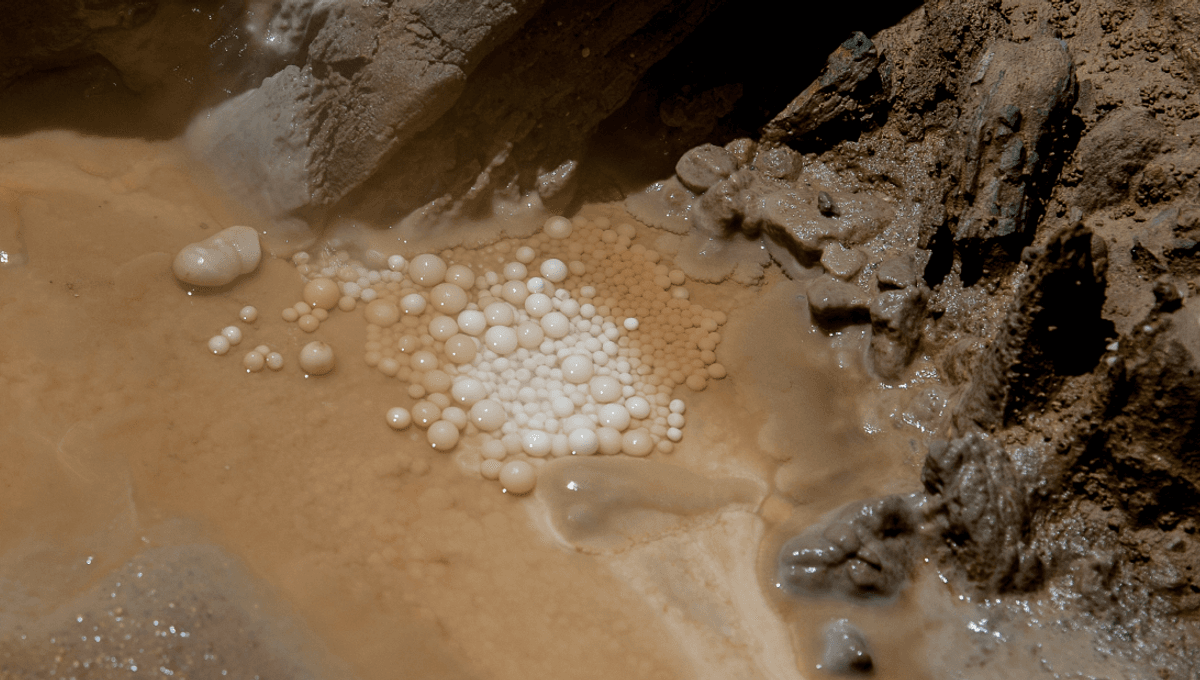
Cave pearls the size of tennis balls feature in the Planet Earth III episode “Extremes”, which dives into Hang Son Doong Cave, a sprawling limestone cave located in Phong Nha-Kẻ Bàng National Park in Vietnam. As one of the largest caves on Earth, it’s a portal to a world of oddities including animals living in zero light conditions, and unique geological formations. It’s also a hot spot for cave pearls.
Cave pearls, also known as oolites, are spherical rock formations unique to limestone caves. This is because limestone caves are uniquely formed by water eroding rock, and water plays a key role in the formation of glossy cave pearls. A type of speleothem (structures formed in caves by the deposition of minerals from water), they’re made up of layers of the minerals calcite or aragonite, both crystalline forms of calcium carbonate.
Just like regular pearls, the calcium carbonate layers are organized in concentric layers because of the way a sphere allows for the greatest amount of deposition on the smallest surface. They’re also similarly glossy due to the moving water that keeps them nice and smooth, but they can quickly degrade once dry.
Their smooth, spherical pearliness is the result of the unique way in which they form from a small nucleus, which might be a single grain of sand or a mineral crystal. Over time, that nucleus gets coated with layers of calcium carbonate that comes from mineral-rich water drops falling from the cave ceiling. The drops of water mean the nucleus is constantly moving, never quite affixing to the cave floor and forming in a spherical shape similar to pearls that develop inside oysters.
Cave pearl formation is a slow process that can take thousands of years, and depending on how long it’s been, they can be tiny specks, or – as in the case of Hang Son Doong – giant pearls the size of tennis balls. While their oyster artisan counterparts have been used in jewelry, cave pearls appear in fashion items less often, but there are some examples – such as this antique cave pearl necklace.
The spherical formations come in many colors, including lime green cave pearls that were discovered in Yemen’s fabled “Well of Hell”. They were discovered on what’s thought to be the first-ever human expedition into the natural sinkhole, leading to the discovery of cave pearls, dead animals, and snakes.
Hang Son Doong came with its own unique challenges, taking the Planet Earth III team 200 meters (650 feet) deep underground where they camped for 18 days, making it the longest expedition ever into the sprawling limestone cave. Fancy taking a look around? You can catch Extremes on BBC iPlayer now.
Source Link: What Are Cave Pearls And Which Caves Can You Find Them In?